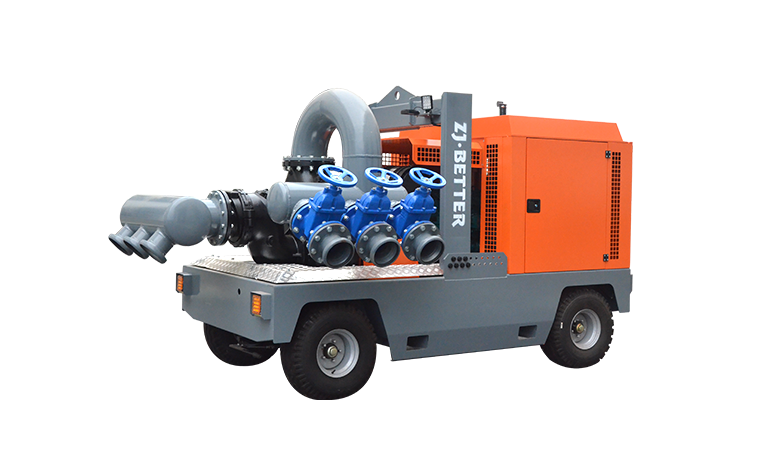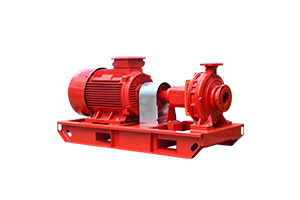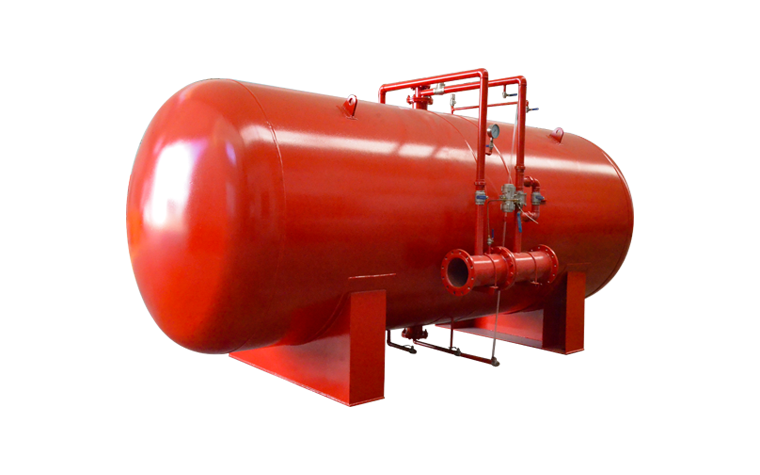-
 Apr 21, 2023What kind of fire pump equipment is guaranteed in fire safety management?Fire safety management is an important part of any business or organization. It is vital to ensure the safety of the people and property in the event of a fire. Fire pump equipment is one of the most important components of fire safety management. Fire pumps are used to move water from a water source to the firefighting apparatus.
Apr 21, 2023What kind of fire pump equipment is guaranteed in fire safety management?Fire safety management is an important part of any business or organization. It is vital to ensure the safety of the people and property in the event of a fire. Fire pump equipment is one of the most important components of fire safety management. Fire pumps are used to move water from a water source to the firefighting apparatus.
Fire pump equipment consists of pumps, motors, and other components. The pumps are used to create the necessary pressure to move the water from its source to the firefighting apparatus. Motors are used to power the pumps and other components. Fire pumps are available in a variety of sizes and capacities.
Fire pumps are designed to be reliable and efficient. They are designed to operate in extreme temperatures and are tested to meet the highest standards of safety and reliability. Fire pumps are also designed to be easy to maintain and service.
Fire pump equipment is guaranteed in fire safety management. Fire pumps are designed to provide the necessary pressure and flow to fight fires and protect people and property. It is important that the right fire pump is selected for the specific application.
Fire pump equipment is essential in fire safety management. It is important to choose the right fire pump and to keep it in good working order. Proper maintenance is essential to ensure that the fire pump is reliable and capable of providing the necessary pressure and flow to extinguish fires.View details -
 Apr 20, 2023Where is the fire pump suitable for?A fire pump is a machine designed to push water from one place to another. It is usually used to move water from a reservoir or storage tank to a fire hydrant, sprinkler system, or other water delivery system. The fire pump is an important component of a fire protection system, and is used to ensure that a sufficient amount of water is available in the event of a fire.
Apr 20, 2023Where is the fire pump suitable for?A fire pump is a machine designed to push water from one place to another. It is usually used to move water from a reservoir or storage tank to a fire hydrant, sprinkler system, or other water delivery system. The fire pump is an important component of a fire protection system, and is used to ensure that a sufficient amount of water is available in the event of a fire.
Fire pumps are typically found in commercial and industrial buildings, and can be used in residential buildings as well. They are commonly used in buildings that are at risk of fire, such as warehouses, factories, and other large buildings. Fire pumps can also be found in areas where fire risks are high, such as in forested areas or areas with a large amount of flammable materials.
Fire pumps are also used in areas where public water supplies are inadequate or unreliable. In these situations, the fire pump can be used to pump water from a nearby source, such as a river or lake, to provide a reliable source of water for fire suppression. Fire pumps can also be used to move water from one building to another in a campus or multi-building environment.
Fire pumps are usually powered by an electric motor, but can also be powered by a diesel engine or other fuel sources. Depending on the application, the fire pump may need to be certified by a third-party testing agency, such as UL or FM Global, to ensure that it meets the necessary safety standards.
In summary, a fire pump is an essential component of a fire protection system. It is suitable for use in a variety of applications, including commercial and industrial buildings, residential buildings, areas with high fire risks, and areas with unreliable public water supplies. Fire pumps are typically powered by electric motors, but can also be powered by diesel engines or other fuel sources. Additionally, they may need to be certified by a third-party testing agency to ensure that they meet the necessary safety standards.View details -
 Apr 20, 2023What are the hazards of an idling fire pump?Idling fire pumps are incredibly hazardous. Fire pumps are essential components of fire protection systems, and a failure of a fire pump can result in a disaster. This essay will discuss the hazards of an idling fire pump and how to mitigate them.
Apr 20, 2023What are the hazards of an idling fire pump?Idling fire pumps are incredibly hazardous. Fire pumps are essential components of fire protection systems, and a failure of a fire pump can result in a disaster. This essay will discuss the hazards of an idling fire pump and how to mitigate them.
Hazard 1: Corrosion
The first hazard of an idling fire pump is corrosion. Fire pumps are usually exposed to a wide range of environmental conditions, and they can quickly corrode if they are left idle. Corrosion can cause a fire pump to break down, leading to a failure of the fire protection system. To mitigate this hazard, it is important to regularly maintain fire pumps and check for signs of corrosion.
Hazard 2: Fires
The second hazard of an idling fire pump is the risk of fire. When a fire pump is left idle, it can overheat and cause a fire. To prevent this hazard, it is important to regularly inspect fire pumps and ensure that they are operating properly. Additionally, it is important to make sure that the fire pump is running at the correct speed, as running a fire pump too fast can also cause it to overheat.
Hazard 3: Contamination
The third hazard of an idling fire pump is contamination. When a fire pump is left idle, the water inside of it can become contaminated. This can lead to a failure of the fire protection system, as the water may not be able to be used to extinguish a fire. To mitigate this hazard, it is important to regularly inspect the water in the fire pump and make sure that it is clean and free of contaminants.
Conclusion
In conclusion, an idling fire pump can pose a number of hazards. These include corrosion, fires, and contamination. To protect against these hazards, it is important to regularly inspect and maintain fire pumps and make sure that they are running properly. By taking these steps, it is possible to reduce the risk of a fire pump failure.View details -
 Apr 20, 2023Preparing Diesel Engine Fire Pumps for OperationDiesel engine fire pumps are an important part of fire protection systems, providing an independent water source for firefighting. Properly preparing a diesel engine fire pump for operation is a key step in ensuring the safety of personnel and property. It requires a thorough inspection of the system components and a complete understanding of their operation.
Apr 20, 2023Preparing Diesel Engine Fire Pumps for OperationDiesel engine fire pumps are an important part of fire protection systems, providing an independent water source for firefighting. Properly preparing a diesel engine fire pump for operation is a key step in ensuring the safety of personnel and property. It requires a thorough inspection of the system components and a complete understanding of their operation.
The first step in preparing a diesel engine fire pump for operation is to perform a visual inspection of the pump, control panel, and its associated components. This includes checking the wiring, fuel lines, and other hardware for signs of damage or wear. All components should be inspected for proper installation and operation. In addition, all fuel and lubricant levels should be checked and adjusted as needed.
After the visual inspection is complete, it is important to test the diesel engine fire pump by running it through a series of checks. This should include testing the pump's ability to reach the required pressure and flow, as well as its ability to start and shut down properly. Once these checks have been completed, the pump should be tested under load conditions to ensure it is able to reach the required pressure and flow.
Once the pump has been tested and any necessary repairs or adjustments have been made, it is important to perform a thorough maintenance check. This includes checking the oil and filter, as well as all of the pumps, belts, and other components for wear or damage. Any necessary repairs or adjustments should be made before the pump is put into service.
After the pump has been tested and maintained, it is important to perform a final safety check. This includes checking all safety devices and ensuring that the pump is in compliance with local fire codes and regulations. This is the last step in preparing a diesel engine fire pump for operation and is essential to ensure its safe and effective operation.View details -
 Apr 20, 2023Preparing Diesel Engine Fire Pumps for OperationDiesel engine fire pumps are an important part of fire protection systems, providing an independent water source for firefighting. Properly preparing a diesel engine fire pump for operation is a key step in ensuring the safety of personnel and property. It requires a thorough inspection of the system components and a complete understanding of their operation.
Apr 20, 2023Preparing Diesel Engine Fire Pumps for OperationDiesel engine fire pumps are an important part of fire protection systems, providing an independent water source for firefighting. Properly preparing a diesel engine fire pump for operation is a key step in ensuring the safety of personnel and property. It requires a thorough inspection of the system components and a complete understanding of their operation.
The first step in preparing a diesel engine fire pump for operation is to perform a visual inspection of the pump, control panel, and its associated components. This includes checking the wiring, fuel lines, and other hardware for signs of damage or wear. All components should be inspected for proper installation and operation. In addition, all fuel and lubricant levels should be checked and adjusted as needed.
After the visual inspection is complete, it is important to test the diesel engine fire pump by running it through a series of checks. This should include testing the pump's ability to reach the required pressure and flow, as well as its ability to start and shut down properly. Once these checks have been completed, the pump should be tested under load conditions to ensure it is able to reach the required pressure and flow.
Once the pump has been tested and any necessary repairs or adjustments have been made, it is important to perform a thorough maintenance check. This includes checking the oil and filter, as well as all of the pumps, belts, and other components for wear or damage. Any necessary repairs or adjustments should be made before the pump is put into service.
After the pump has been tested and maintained, it is important to perform a final safety check. This includes checking all safety devices and ensuring that the pump is in compliance with local fire codes and regulations. This is the last step in preparing a diesel engine fire pump for operation and is essential to ensure its safe and effective operation.View details -
 Apr 20, 2023Preparing Diesel Engine Fire Pumps for OperationDiesel engine fire pumps are an important part of fire protection systems, providing an independent water source for firefighting. Properly preparing a diesel engine fire pump for operation is a key step in ensuring the safety of personnel and property. It requires a thorough inspection of the system components and a complete understanding of their operation.
Apr 20, 2023Preparing Diesel Engine Fire Pumps for OperationDiesel engine fire pumps are an important part of fire protection systems, providing an independent water source for firefighting. Properly preparing a diesel engine fire pump for operation is a key step in ensuring the safety of personnel and property. It requires a thorough inspection of the system components and a complete understanding of their operation.
The first step in preparing a diesel engine fire pump for operation is to perform a visual inspection of the pump, control panel, and its associated components. This includes checking the wiring, fuel lines, and other hardware for signs of damage or wear. All components should be inspected for proper installation and operation. In addition, all fuel and lubricant levels should be checked and adjusted as needed.
After the visual inspection is complete, it is important to test the diesel engine fire pump by running it through a series of checks. This should include testing the pump's ability to reach the required pressure and flow, as well as its ability to start and shut down properly. Once these checks have been completed, the pump should be tested under load conditions to ensure it is able to reach the required pressure and flow.
Once the pump has been tested and any necessary repairs or adjustments have been made, it is important to perform a thorough maintenance check. This includes checking the oil and filter, as well as all of the pumps, belts, and other components for wear or damage. Any necessary repairs or adjustments should be made before the pump is put into service.
After the pump has been tested and maintained, it is important to perform a final safety check. This includes checking all safety devices and ensuring that the pump is in compliance with local fire codes and regulations. This is the last step in preparing a diesel engine fire pump for operation and is essential to ensure its safe and effective operation.View details

.png)
.png)

.png)


